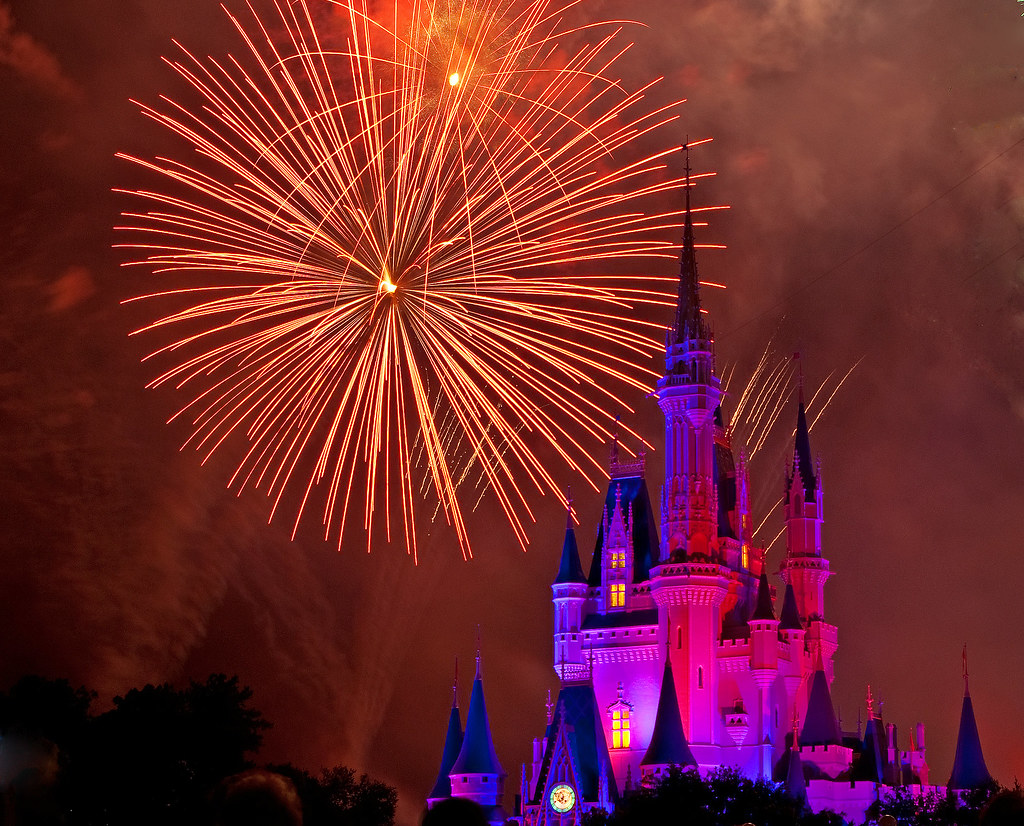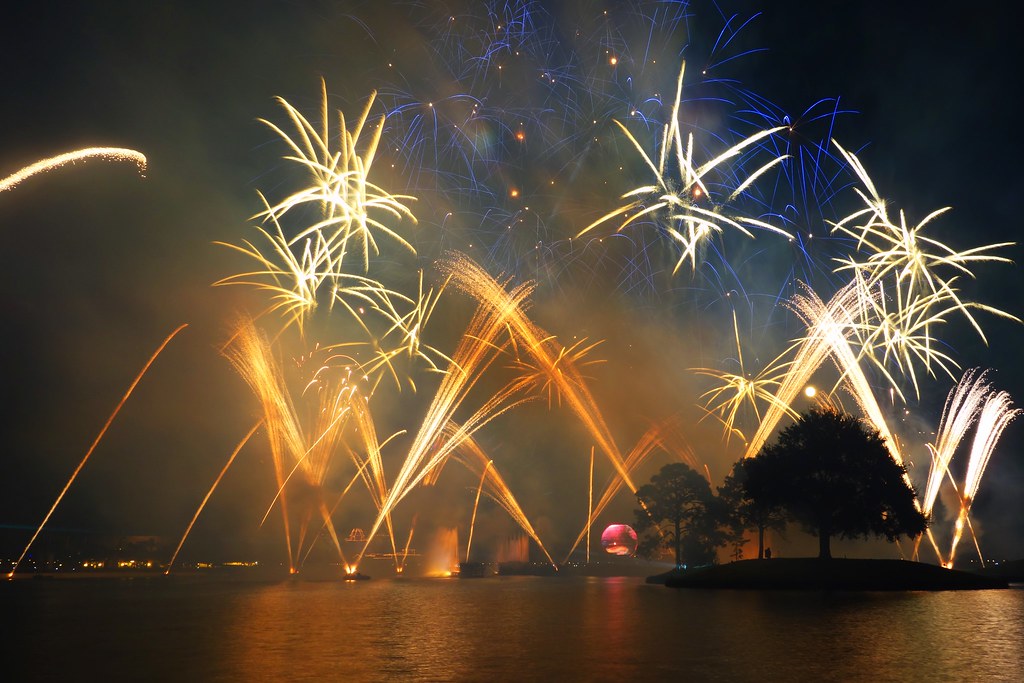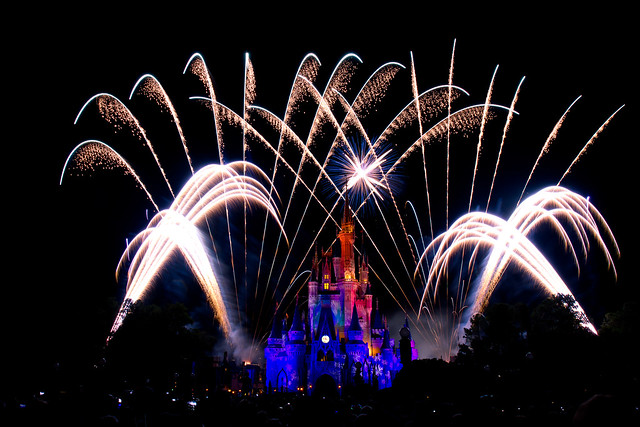Alright I figured this would be the best place for my question...
I have had my rebel t3i for a number of years now, and the pictures I still struggle with our nighttime pictures. Either the flash is blinding or the picture is blurry and unfocused.
I am going to Disney World in a few weeks and would love some advice on nighttime photos, parade photos, fireworks photos, etc. Settings, angles, sample pictures, anything and everything appreciated!!
Lots of advice on fireworks has been offered (my best success has been with a tripod, bulb mode, and a remote trigger, just as others have suggested). To the rest of your question, I have a few recommendations for other shots.
First, turn off your flash. As you've noted, the built-in flash can give you some pretty harsh results. It's effective range isn't as far as you might think, and it isn't going to do anything for you if you're shooting something more than 4-5 yards away. If you have it turned on for shots that are beyond it's effective range, it's only going to mess up the camera's exposure calculations. With a little practice, you'll probably find that the T3i's sensor is good enough to achieve some really good pictures without the flash anyway.
Second, I recommend you check out your camera's shutter priority mode (Tv on the dial). In shutter priority mode, you tell the camera how long to leave the shutter open, and let it assign the correct aperture to properly expose the photo. This allows you to set a speed that you're personally able to hand-hold with minimal blurring due to camera shake. Do some experimenting before your trip to find the slowest shutter speed you can hand-hold without too much blur. Keep in mind that this setting will be a lot different based on the focal length. If you're really zoomed in, camera shake will have a much bigger impact than if you're taking a wider shot.
Next, set the ISO to auto. In Tv mode with ISO set to auto, if the camera can't open the aperture wide enough to properly expose the image, it will bump up the ISO until it can. As the ISO increases, though, so will the noise in the photo. Do some playing around before your trip to determine the highest level of noise you deem acceptable (keeping in mind that there is post-processing software that will be able to remove some noise). In your camera's menu, there's an option to set the upper limit for the highest ISO you want the auto ISO to use. It will prevent the camera from going into that ISO range you decided was too noisy. I think the default setting is 3200.
You'll need to keep an eye on the readouts in your viewfinder, because the kit lens is only going to take you so far. In Tv mode, if the aperture can't be opened any wider and the ISO can't be bumped any higher, the aperture number will blink in the display. This is an indication that the shot will be too dark, and that the camera can't make it any better given the settings you've restricted it to. (When you start getting too many of these occurances, it's when a f1.2 lens goes onto your wish list.)
Avoid zooming in. As I mentioned earlier, when you're zoomed in, camera shake will have more of an effect. Also, the kit lens you have is a variable aperture lens. The farther you zoom, the less light the lens is able to let in. Keep it wide, save using the highest quality file size possible (I always shoot in RAW, but a JPEG L also works), and crop in post if necessary.
Metering mode is also a consideration. Ask yourself if you're taking a shot of an evenly-lit scene, or if the brightness of the main subject differs widely from the brightness of its surroundings (e.g., a lighted Electric Water Pageant float in the middle of the pitch-black water)? This is almost a shot-by-shot decision. Do some playing around with the T3i's four different metering modes. The default, evaluative metering, won't always be the best choice -- especially at night.





